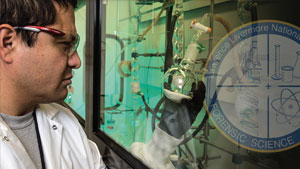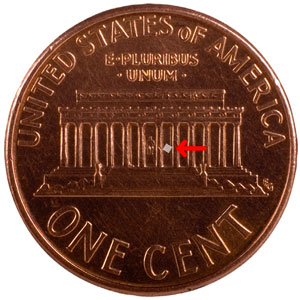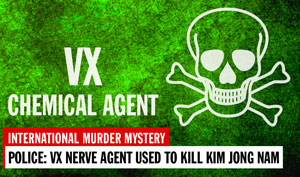The Forensic Science Center (FSC) is on the cutting edge of investigating the use and proliferation of chemical, biological, radiological, nuclear, and explosive threat agents—and discerning whether humans have been exposed to these agents.
When determining if a chemical, biological, radiological, nuclear, or explosive (CBRNE) threat agent has been used, forensic scientists do not look only for traces of the agent itself. They also conduct tests for signatures. For human exposure investigations, this includes conducting tests for biomarkers whose presence pinpoints whether an individual was exposed to a particular material. For attribution investigations, scientists test for chemical attribution signatures (CAS)—the unreacted starting materials, impurities, or byproducts of agent synthesis that may provide information on its origin. The FSC specializes in utilizing and developing test methods to screen biological samples (e.g., blood and urine) and environmental samples for signatures associated with a variety of chemical and biological threat agents. With in-house experts in forensic biology and chemistry working in specialized laboratories, the center is well-equipped to provide state-of-the-art analysis for known threats while continuously pushing the limits of detection. It also develops new assays to test for novel and emerging threats, such as specialized biotoxins.
Detecting Chemical Attribution Signatures for National Security
Identifying the pathway used to synthesize a threat agent provides essential support to the attribution process. Using gas chromatography–mass spectrometry, liquid chromatography–mass spectrometry, and inductively coupled plasma–mass spectrometry, the FSC is identifying CAS present in pure agent samples, as well as in contaminated environmental and food samples. Using advanced data analysis tools, the detected CAS can be prioritized, and objective and quantifiable information can be provided to support the attribution assessments of our law enforcement and intelligence partners. This work reflects the intersection of the FSC’s research and development efforts with its mission to conduct rigorous analysis and identification of CBRNE samples from the real world.
Expanding Biomarkers’ Reach
Over the past decade, the use of chemical warfare agents (CWAs) by state and nonstate actors around the world has increased significantly—from the chlorine and sarin gases unleashed on a town in Syria to the assassination in Asia of the half-brother of North Korean leader Kim Jong-Un using nerve agent VX. A need exists for the ability to rapidly detect exposure to CWAs in biomedical samples. The FSC has developed several methods for this purpose, starting with assays to detect nerve agents and sulfur mustard in blood and urine samples. These biomarkers and assays can address the ever-evolving threats of both today and tomorrow.
Pursuing Toxin Signatures
Protein toxins such as botulinum toxin are particularly concerning as potential threat agents because they are easily available and toxic at extremely low concentrations. For the past several years, the FSC has been developing assays for protein toxins using liquid chromatography–tandem mass spectrometry. The FSC’s high-fidelity laboratory instruments can confirm the presence of a toxin, its subtype, and its viability. Complete forensic analyses of these toxins typically require both environmental samples (for identifying materials or residues on surfaces) as well as biological samples (for securing proof of poisoning). Such analyses have a high amount of background contamination relative to the suspected small amount of toxin, and a wide variety of surfaces and molecules that can bind, adhere, or interact with toxins. Thus, developing sensitive assays and optimized extraction procedures are essential components of the FSC’s portfolio.
Discovering Relevant Biological Matrices
As new threat agents are emerging worldwide, FSC scientists are working to identify the biological matrices where exposure signatures accumulate and are the most persistent after exposure. Working in collaboration with Livermore’s Center for Accelerator Mass Spectrometry, animal studies are performed to establish the metabolism, distribution, and elimination pathways of novel threat agents. These studies are positioning the FSC to have the capability to determine if a subject has been exposed to these novel agents before they are used against people.







